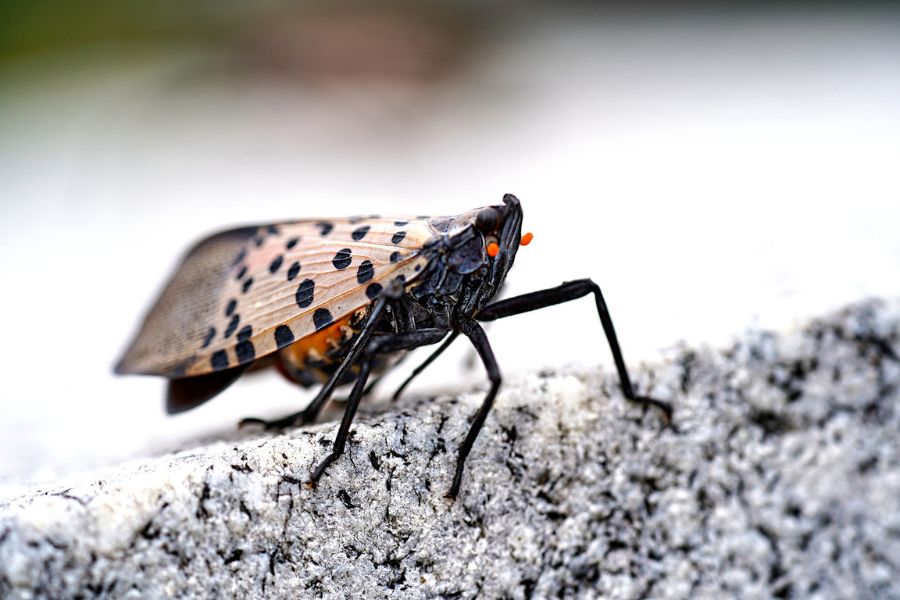NASSAU

Spotted Lanternfly Control
The Spotted Lanternfly Threat
The Spotted Lanternfly, an invasive planthopper from Asia, first detected in southeastern Pennsylvania in 2014, poses a significant risk to a wide range of plant species. Since 2014, it has spread to a number of states, including New York.
This pest targets plants and trees by feeding on their sap, weakening them significantly as well as disrupting their ability to photosynthesize. This can lead to significant structural damage to the trees on your property, and with enough time, can even kill them.

CONTACT GREENLEAF TODAY!
Lifecycle and Identification of the Spotted Lanternfly
The Spotted Lanternfly completes its life cycle once a year, progressing through several distinct stages:
- Egg Stage: Eggs are laid in the fall, covered with a protective mud-like substance, on various surfaces.
- Nymph Stage: After hatching in spring, nymphs go through four stages, starting from black and white spotted to a red, white, and black appearance.
- Adult Stage: By July, adults are visible, characterized by their large size (about 1 inch), mobility, and vibrant wing pattern, although they keep their wings closed while feeding.
The Damage Caused by the Spotted Lanternfly
The feeding habits of the Spotted Lanternfly lead to severe plant damage, characterized by:
- Oozing sap, wilting, leaf curling, and eventual dieback of trees.
- Excretion of honeydew, fostering sooty mold growth that stains plants and nearby surfaces, diminishing plant health and aesthetic value.
Tree Management for Pest Control
Targeting Key Host Trees for Removal
Greenleaf Tree Care specializes in the removal of key host trees, particularly the Tree of Heaven, an invasive species that Spotted Lanternflies prefer and use for rapid reproduction. Removing these trees from your property disrupts the lifecycle of the Spotted Lanternfly, greatly reducing their population and impact.
Benefits of Strategic Tree Removal
- Immediate Reduction in Spotted Lanternfly Populations: By eliminating their primary habitat, we directly decrease the number of pests.
- Long-term Landscape Health: Removing susceptible trees prevents future infestations and promotes the health of remaining plants.
Partner with Greenleaf Tree Care
Protect your landscape from the invasive pest with our Spotted Lanternfly control. If you notice potential signs of infestation or want to take preventive measures, reach out to us today. Our team is equipped to provide comprehensive care and management, ensuring your property remains a thriving, Spotted Lanternfly-free zone.
CONTACT GREENLEAF TREE REMOVAL SERVICE FOR HIGH-QUALITY, AFFORDABLE TREE SERVICES IN NEW YORK TODAY
If you have tree problems on your New York residential or commercial property, our professional & local tree service team is here to help.